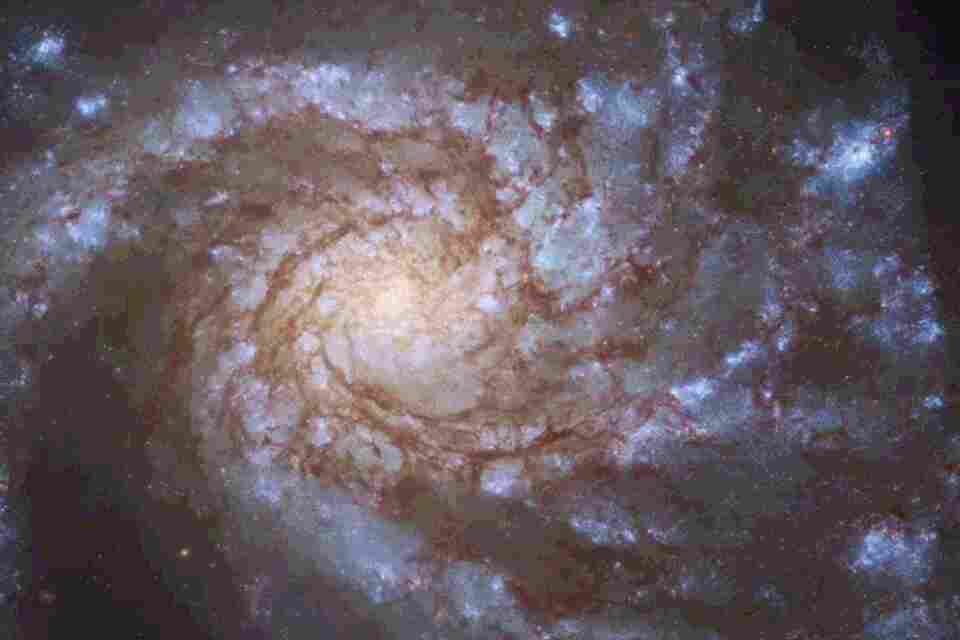Technology
Nasa reveals stunning image of ‘grand design’ galaxy with ‘luminous arms’ captured by the Hubble Space Telescope

NASA has captured an awe-inspiring image of a spiral galaxy with a ‘grand design’.
The stunning photo was released late last week by the European Space Agency (ESA).
Nasa’s Hubble Space Telescope has captured an awe-inspiring image of a spiral galaxy with a ‘grand design’
Taken by Nasa’s Hubble Space Telescope via its Wide Field Camera 3 (WFC3), the image showcases the galaxy dubbed Messier 99 (or M99) in ultraviolet and optical lights.
In the photo, the galaxy’s dazzling arms take up most of the frame as they glisten in several hues of purple, blue and dark red.
M99 is located approximately 55 million light-years from Earth in the constellation Coma Berenices.
It is considered a so-called ‘grand design’ galaxy because of its “well-defined, prominent spiral arms,” ESA officials said in a statement.
Nearly 10 percent of all spiral galaxies feature a ‘grand design’, according to Nasa.
Scientists noted that this image is significant because it helped them study two different astronomical phenomena.
First, astronomers were able to further explore a fading cosmic explosion whose luminosity level is somewhere between novae and supernovae.
Novae are caused by the interactions between white dwarfs and larger stars in binary systems, while supernovae comprise the catastrophically violent deaths of massive stars.
Most read in Tech
The explosion was first observed in 2010 and is considered a big mystery by scientists, who are uncertain about what caused it.
One such explanation proposed by researchers includes that the star’s increased brightness could have been caused by “a giant planet plunging into its parent star,” Nasa said.
Second, researchers were able to use the image to explore the connection between a young star and the gas clouds it grows from.
Along with M99, scientists also looked at 37 other galaxies to study this connection, using the Atacama Large Millimeter/submillimeter Array (ALMA) telescope.
“The combination of Hubble’s observations of young stars and ALMA’s insight into clouds of cold gas will allow astronomers to delve into the details of star formation, and paves the way for future science with the NASA/ESA/CSA James Webb Space Telescope,” ESA researchers said.
M99 was discovered by Pierre Méchain in March 1781 and was one of the first galaxies researchers observed with a spiral pattern.
Read More On The Sun
Furthermore, the galaxy features star formation activity that’s three times larger than other similar galaxies.
Despite this, it is not classified as a ‘starburst galaxy’, which describes a galaxy undergoing an exceptionally high rate of star formation.
We pay for your stories!
Do you have a story for The US Sun team?
Email us at exclusive@the-sun.com or call 212 416 4552.
Like us on Facebook at www.facebook.com/TheSunUS and follow us from our main Twitter account at @TheSunUS